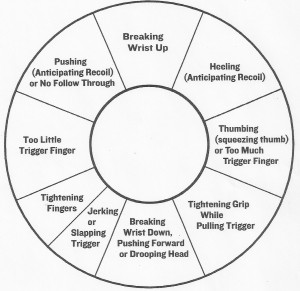Roland Thunder
New member
My marksmanship skills were pretty decent until recently when I tokk a few weeks off for vacation. My marksmanship has been dreadful since returning from vacation and I can't figure out what I am doing wrong all of a sudden. My friends at the range are all telling me I am "pushing" the gun outward and downward when I shoot. I even see myself doing it sometime. I keep telling them, "I know what I am doing wrong, but how do I make myself quit doing it". I have had people tell me that I am using too much exertion with my shooting hand. I've had others tell me I'm not gripping the gun tight enough (Massood Ayuub says to grip it as tight as you can) hence the gun is jumping when I shoot. I've had some say to press forward with your shooting hand while pressing backward with your support hand (isometrics). I've had others say this only applies to the Weaver stance. I've had some people says stretch your arms all the way out (Isosceles stance) others say relax your arms a bit. I've tried dry firing and don't seem to have the "dipping" problem when I dry fire only when shooting live rounds.
I'm shooting a Sig 226 9mm, great gun, should be able to shoot it better than I am.
I'm shooting a Sig 226 9mm, great gun, should be able to shoot it better than I am.

